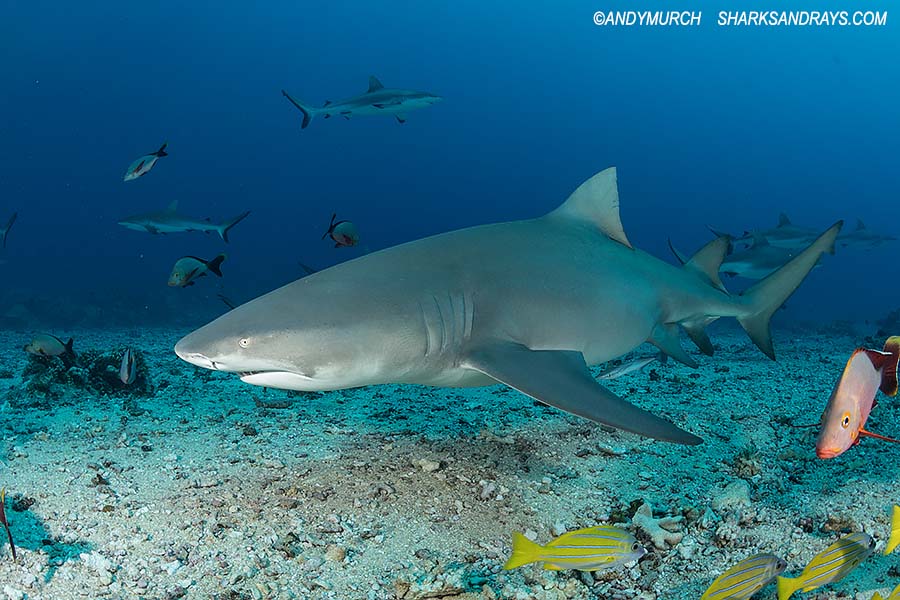|
|
|
SHARK INFO |
|
SHARK |
|
SHARK EVOLUTION |
|
|
|
SHARK DIVING |
|
SHARK DIVING 101 |
|
|
|
CONSERVATION |
|
|
|
PHOTOGRAPHY |
|
SHARK PHOTO TIPS |
|
|
|
RESOURCES |
|
|
|
WEB STUFF |
|
WHAT IS ELASMODIVER? Not just a huge collection of Shark Pictures: Elasmodiver.com contains images of sharks, skates, rays, and a few chimaera's from around the world. Elasmodiver began as a simple web based shark field guide to help divers find the best places to encounter the different species of sharks and rays that live in shallow water but it has slowly evolved into a much larger project containing information on all aspects of shark diving and shark photography. There are now more than 10,000 shark pictures and sections on shark evolution, biology, and conservation. There is a large library of reviewed shark books, a constantly updated shark taxonomy page, a monster list of shark links, and deeper in the site there are numerous articles and stories about shark encounters. Elasmodiver is now so difficult to check for updates, that new information and pictures are listed on an Elasmodiver Updates Page that can be accessed here:
|
|
_ |
SICKLEFIN LEMON SHARK |
|||||||
|
|
Sicklefin Lemon shark photographs copyright Andy Murch. All rights reserved View all available Lemon Shark Pictures in the Shark Picture Database Common Names: Sicklefin Lemon shark, Sharptooth Lemon Shark, Lemon Shark.
Latin
Name: Negaprion
acutidens Family: Carcharhinidae Identification: A large shark with a stocky yellowish brown body. Fins falcate with acutely pointed tips. Second dorsal fin almost as large as first. Eyes large. Snout broadly rounded with a distinctive small black spot on the tip. Size: Average length 220-240cm. Maximum length 310cm. Habitat: An important coastal species. Inshore lagoons, and reef faces near deep water drop offs. Juveniles stay on very shallow reef flats. Distribution: A wide ranging species in the Indian Ocean and western to Central Pacific. Not present in the eastern Pacific where it is replaced by the common lemon shark. Behavior: A slow swimmer. Able to rest for extended periods on the substrate. Reproduction: Viviparous. Recorded litter size 1-14. Gestation period 10-11 months.
Conservation Status:
Within Australia, data from the Northern Territory (Lyle et.al.
1984) indicated that catch rates of N.
acutidens in
gill net and long line fishing trials were very low. N.
acutidens is
taken in small quantities (approximately 15 tonnes/yr) in the Western
Australia northern shark fisheries. These fisheries comprise a very small
number of boats (13 licenses, seven active and only three fishing for six
months or more) operating over a very large length of coast. A smaller
quantity of N.
acutidens are
also taken as bycatch in trawl and gillnet fisheries in northern Western
Australia waters. There are likely to be significant areas of unfished
habitat outside the operational ranges of these fisheries (R. McAuley,
pers.comm). Photographs: White Valley, Tahiti, French Polynesia. Similar species:
Diving
logistics:
Sicklefin lemon sharks
can be found at a number of popular dive sites in the Pacific. They regularly
show up to shark feeds in Tahiti and Moorea, French Polynesia but chumming for
sharks in FP was banned at the end of 2019. Citations: https://dx.doi.org/10.2305/IUCN.UK.2003.RLTS.T41836A10576957.en. Downloaded on 09 February 2020. Commercially available images: |
||||||
|
Sicklefin Lemon Shark 005 |
Sicklefin Lemon Shark 044 |
Sicklefin Lemon Shark 040 |
Sicklefin Lemon Shark 035 |
Sicklefin Lemon Shark 028 |
Sicklefin Lemon Shark 020 |
||
|
Sicklefin Lemon Shark 018 |
Sicklefin Lemon Shark 015 |
|
|
|
|
||
































